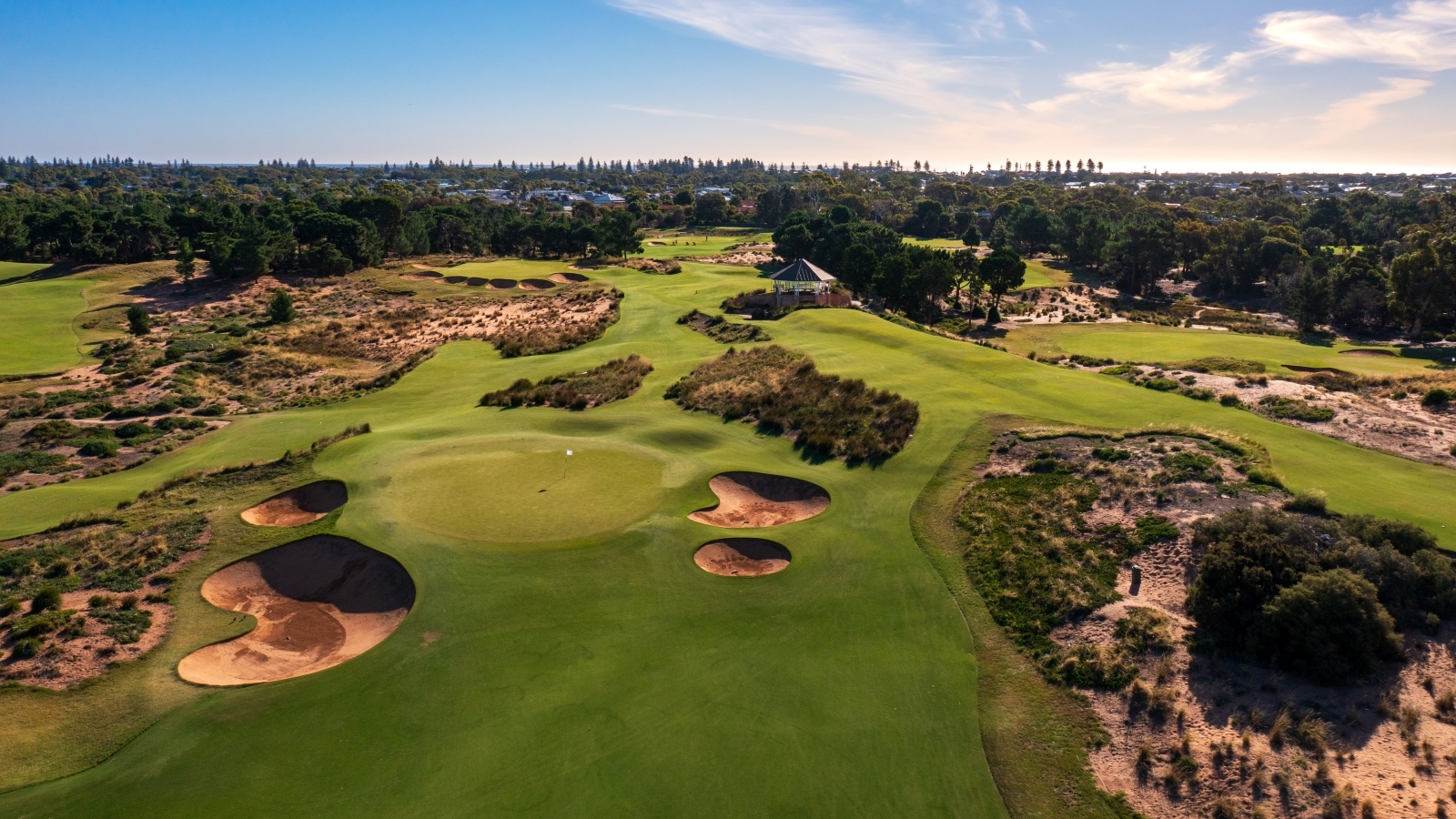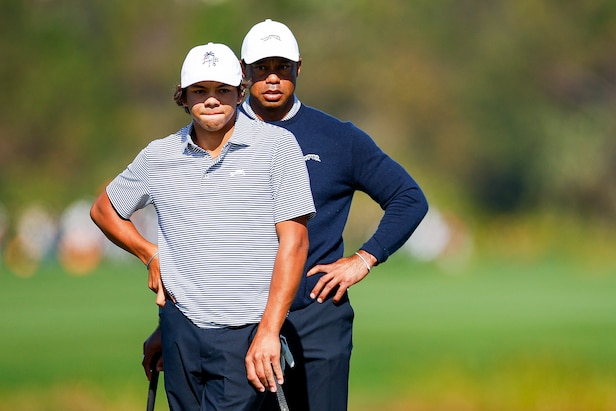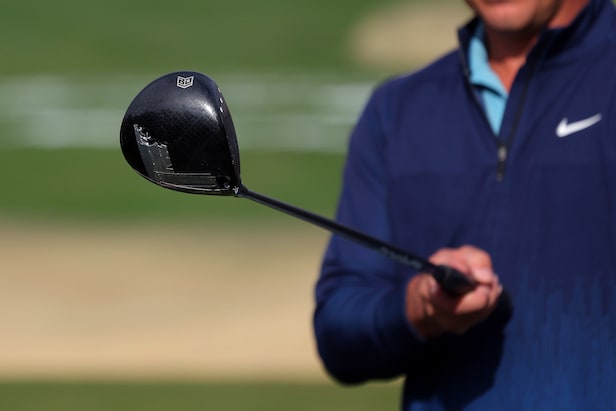When discussed alongside other great Australian courses born in the same era and influenced by the same architect, Dr Alister MacKenzie, Royal Adelaide is set aside as a very different layout.
Unlike Royal Melbourne, for example, Royal Adelaide didn’t have the genius of course builder Mick Morcom bringing MacKenzie’s drawings to life. In Sydney, the New South Wales course had dramatic terrain by the sea. A no-brainer for world-class golf.
So, what makes Royal Adelaide, located in suburban Seaton and cut in two by the Adelaide to Glenelg rail line, so special?
For many, like myself, it has two great attributes – no two holes are even remotely the same, while the subtle challenges of each hole vary from day-to-day, making it an incredibly interesting course to play.
Royal Adelaide is less than two kilometres from the ocean at Seaton, about 20 minutes west of the city centre. The club was founded in 1892, but didn’t move to its current location until 1905.
Since then, there have been plenty of alterations made to the original Royal Adelaide layout that skirted sand dunes and had few trees at all. Its rise to world-class status began with the arrival of Dr MacKenzie during his Australian visit in 1926. By the time MacKenzie saw the course, many pine trees had already been planted across the property, but it didn’t seem to alter his high opinion of the landscape.
“One finds a most delightful combination of sand dunes and fir trees; a most unusual combination even at the best seaside courses,” MacKenzie wrote after his visit. “No seaside courses that I have seen possess such magnificent craters as those at Royal Adelaide.”
Not all of MacKenzie’s suggestions were immediately welcomed, but as time proved his genius, more and more of his proposals were embraced.
Royal Adelaide’s fairways, like here at the 4th, have been widened to be more strategic. PHOTO Brendan James.
One idea immediately adopted was the creation of the 3rd hole, which is considered one of the best short par-4s in the world. The drive on the 266-metre hole is blind over the gentle crest of a hill to a fairway which is lined by rough and pines to the left, as well as a high grass-covered sand dune to the right. The green is an odd shape and has been referred to as resembling “a leg of mutton”, which is fairly accurate. The green lies between a small ridge on its edge to the left and a knoll to the right. The beauty of this hole is that if you are brave, and long enough, to go for the green from the tee, you can make anything from an eagle two to a double bogey or worse. In the early rounds of the 1938 Australian Open, the legendary Norman Von Nida attacked the short hole and paid the price – he pencilled in a quintuple-bogey nine and later finished second in the championship.
MacKenzie was also responsible for altering the layout to play through, not around, the many sand dunes that so captured him during this visit. The blind tee shot over a deep crater and through the dunes on the 4th, the approach over the crater on the 11th, and the approach on the superb 14th have made these iconic par-4s.
As is the case with most courses, Royal Adelaide has been altered by various club committees and with different course design consultants came an eclectic mix of styles.
The appointment of internationally acclaimed designer American Tom Doak, and his team at Renaissance Golf, as consulting architects in 2012, significantly enhanced this magnificent course. Many believe it has never been closer to what MacKenzie intended with his design.
Doak incorporated simple changes like altering mowing lines, realigning tees and creating wider-playing corridors on many holes. Then there were the more significant rebuilds of several greens and remodelling bunkers to be more consistent across the layout.
After playing the world-class 3rd hole, you then venture into a stretch of four holes which is not only visually stunning, but more closely resembles the land which so enthused MacKenzie back in 1926.
“Royal Adelaide is a great layout that has become even better over the last few years as the Renaissance Golf team have slowly and gently removed rough edges that had crept in over previous decades and made little changes that have further improved the course,” Top-100 ranking judge Brian Walshe commented.

Royal Adelaide’s iconic clubhouse beside the rail line and 18th green. PHOTO: Brendan James.
Ranking panellist Michael Green agrees: “The understated, old-school feel of Royal Adelaide gets better with every round. The recent, subtle design tweaks have made one of the gems of Australian golf better than ever.”
Having played the blind tee shot over the crater on the par-4 4th hole, you walk into a sparse links-style area where fairways are punctuated by odd-shaped mounds, dunes and hollows. It is here where you will find plenty of evidence of Doak’s influence – the rough in between the holes is kept longer, but the payoff is that the fairways are wider. Adjoining fairways are connected by beautifully manicured short grass, while sandy wasteland has been exposed.
One such area lies between tee and green on the par-3 7th hole, adding to the daunting sight of nine bunkers ringing the putting surface. This is one of the most recent holes to be remodelled by Doak, with an extra tee stretching the hole to 167 metres from the back markers, while an additional bunker was carved into the back edge of the green.
Another hole which remains true to MacKenzie’s design is the 350-metre par-4 11th. The club regards this as the signature hole of the layout and it’s not hard to see why. A solid, accurate tee shot must avoid fairway bunkers right and left of the narrow driving zone. About 90 metres from the putting surface, a band of long native grass and sandy soil cuts the fairway in two. The short-iron approach is to a green set in a crater surrounded by high sand dunes and pine trees, which frame the hole beautifully.
FACT FILE
LOCATION: Tapleys Hill Rd, Seaton, South Australia.
CONTACT: (08) 8356 5511.
WEBSITE: www.royaladelaidegolf.com.au
DESIGNERS: Dr Alister MacKenzie (1926); Peter Thomson & Mike Wolveridge (1979 & 1997); Mike Clayton (2009); Tom Doak – Renaissance Golf (2012 & ongoing).
PLAYING SURFACES: Bentgrass (greens); Santa Ana couch (fairways).
COURSE SUPERINTENDENT: Nathan Bennett.
GREEN FEES: $450 (18 holes, non-affiliated Golf Australia members), $350 (Golf Australia affiliated members).
ACCOLADES: Ranked No.11 in Golf Australia magazine’s Top-100 Courses for 2024.






